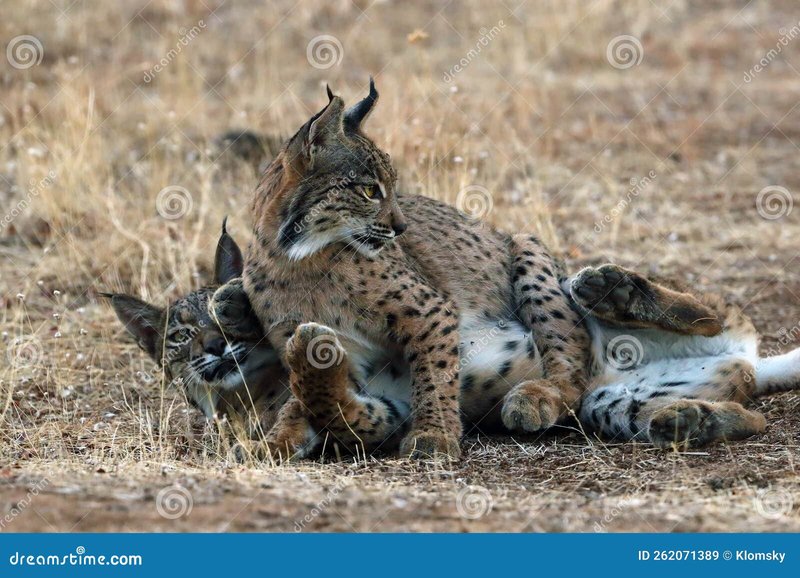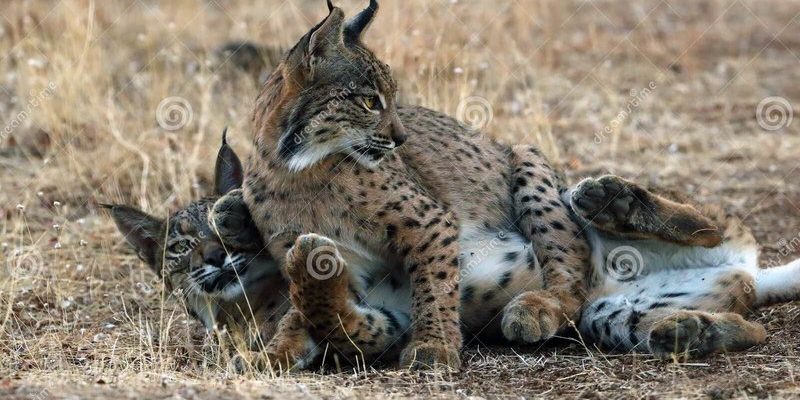
Imagine a mom who must constantly be on the move, teaching her little ones how to hunt, play, and survive in their beautiful yet challenging home. Raising young Iberian lynxes is not just about feeding them; it’s about instilling survival skills and forging a strong bond that will last a lifetime. So, let’s dive into how these incredible animals raise their young in the wild, from their mating rituals to the ways their kits learn to thrive.
The Mating Rituals of Iberian Lynxes
Before we talk about raising their young, we need to understand how Iberian lynxes even get to that point. The mating season usually begins in late winter. During this time, males roam far and wide, seeking out potential mates. You might picture them as romantic wanderers, marking their territory and calling out in hopes of attracting a female.
Mating can be quite a dance. The male will often engage in various displays meant to impress the female, like vocalizations and scent marking. Once a couple clicks, they’ll mate multiple times over a few days. Females typically give birth to one to four kits after a gestation period of about 63 days. This is the start of a journey that’s loaded with challenges and joys.
Finding the Perfect Den: Where Kits Are Born
After mating, the female Iberian lynx searches for a safe place to give birth. This is crucial, as the den needs to protect the vulnerable kits from predators while providing a cozy environment. Often, they choose dense shrubs or thickets in forests, sometimes even old rabbit burrows.
The den is a special place. The female will line it with fur and vegetation to make it comfortable for her newborns. Picture a tiny, safe haven where the kits will take their first breaths, hear their mother’s soft calls, and experience the world for the very first time. This environment serves as a sanctuary in their early weeks, and it’s where they’ll grow and begin to learn essential skills.
The First Few Weeks: Vulnerability and Care
In their first weeks, kits are completely dependent on their mom. They can’t see or hear right away, and they rely on her warmth and milk for survival. This stage is all about bonding. The mother is incredibly attentive, spending most of her time nursing and keeping her kits warm.
As they grow, the mother gradually introduces them to solid food, which usually comes from her hunting efforts. Imagine a caring teacher, gently nudging her students toward independence. She’ll bring back prey, such as rabbits or birds, and place it near the kits, encouraging them to nibble and explore. This hands-on approach helps them learn what to eat and how to hunt.
Learning to Hunt: Skills for Survival
Once the young lynxes are around two months old, it’s time for lessons. The mother starts taking them on little excursions to teach them how to stalk and catch prey. You might wonder, how do these lessons play out? Well, it’s a mix of playful antics and serious learning.
The kits practice by play-fighting and mimicking their mother’s movements. They learn to crouch low in the grass, use their keen eyesight, and make quick, quiet movements. It’s essential for their development, as hunting is a critical survival skill. Watching them discover their natural instincts is like seeing young athletes training for a big game; there’s energy, enthusiasm, and sometimes a little clumsiness.
Social Structure and Sibling Interaction
Family life among Iberian lynxes isn’t just about the mother and her kits. The siblings play an important role too. They engage in playful battles, chase each other, and even share food. This helps them develop social skills that are vital for their future interactions with other lynxes.
You might think of these sibling playdates as a mini boot camp for socialization. It’s their way of learning how to navigate relationships, establish hierarchies, and even understand hunting as a team. These experiences will shape them into the adult lynxes they’ll become, deeply influencing their personalities and behaviors.
Transitioning to Independence
As the kits reach about six to eight months of age, it’s time for them to start becoming independent. Their mother will slowly encourage them to venture out on their own. The transition involves a delicate balance; she will still provide some support but will reduce it gradually as they learn to fend for themselves.
You might liken this to a parent teaching a teenager to drive. There’s a sense of pride mixed with anxiety. The mother knows they must learn to survive without her but also trusts that she’s equipped them with the right skills. Once they reach around ten months, they’re often ready to find their territory and live on their own, though siblings will sometimes stay together for a bit longer.
The Challenges of Raising Young Lynxes
Raising young Iberian lynxes isn’t without its challenges. These amazing creatures face various threats, from habitat loss to competition for food. The mother has to constantly be on guard, ensuring that herself and her kits are safe.
Environmental factors also play a big role in their survival. Droughts can lead to food shortages, affecting both the mother’s hunting success and the kits’ growth. Conservation efforts are crucial here as well, aiming to protect their habitats and support their populations.
Despite the challenges, the journey of the Iberian lynx is a powerful story of resilience and instinct. Watching these animals navigate the wild with their young is a reminder of the beauty and complexity of nature.
As we wrap up, it’s clear that the Iberian lynx’s approach to parenting reflects their unique adaptations and the environment they thrive in. From romantic beginnings to the bittersweet moment of independence, every step in their journey is a testament to the wild’s wonders. Understanding how they raise their young not only enriches our knowledge but also inspires us to protect these remarkable creatures and their habitats for generations to come.

